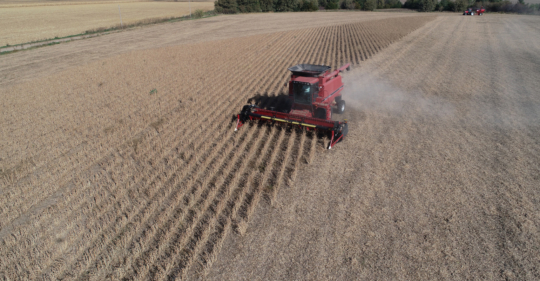Explore our blog featuring articles about farming and irrigation tips and tricks!
Healthy Soils, Healthy Harvest

By: Chrystal Houston
The crop at the Project GROW (Growing Rotational crops on Wellfields) demonstration plot is thigh-high, the rows of fuzzy bean pods a muted golden brown. Leininger pulls a pod from a plant and pops it open to reveal three perfectly shaped milky-white ovals.
“These are ready to cut, ready to combine. They’re dry enough,” he says, rolling the beans around his palm.
While the beans are impressive, Leininger gets down on one knee to show what he’s most proud of. “See this?” he says, pointing to a smattering of small holes where something has burrowed into the Earth. He gathers a few clumps of what appears to be soil.
“Do you know what this is?” he says with a grin, holding the clumps up. “This is earthworm castings. In other words, earthworm poop.” The earthworms are both indicators and agents of a healthy soil system, he explains. “These worms can burrow down to 6 feet, and as they come back up will ingest soil and dead plant matter,” he says. “Their castings are very fertile.”
The worms offer a double benefit. In addition to enriching soil with their natural fertilizer, their tunnels break up the soil, keeping it loose and aerated — the ideal growing conditions for crops. The tunnels make the soil more porous, like a sponge. That’s never been more important in Nebraska than in 2019, when flooding has threatened the livelihood of many farmers.
“If you have healthy soil, that’s a huge buffer of protection against weather extremes, because your soil can take in more moisture and it can hold that moisture longer for your crop,” Leininger says. “Healthy soil is really an advantage when it comes to variabilities in weather.”
Stay up to date on all T-L news and get alerts on special pricing!


